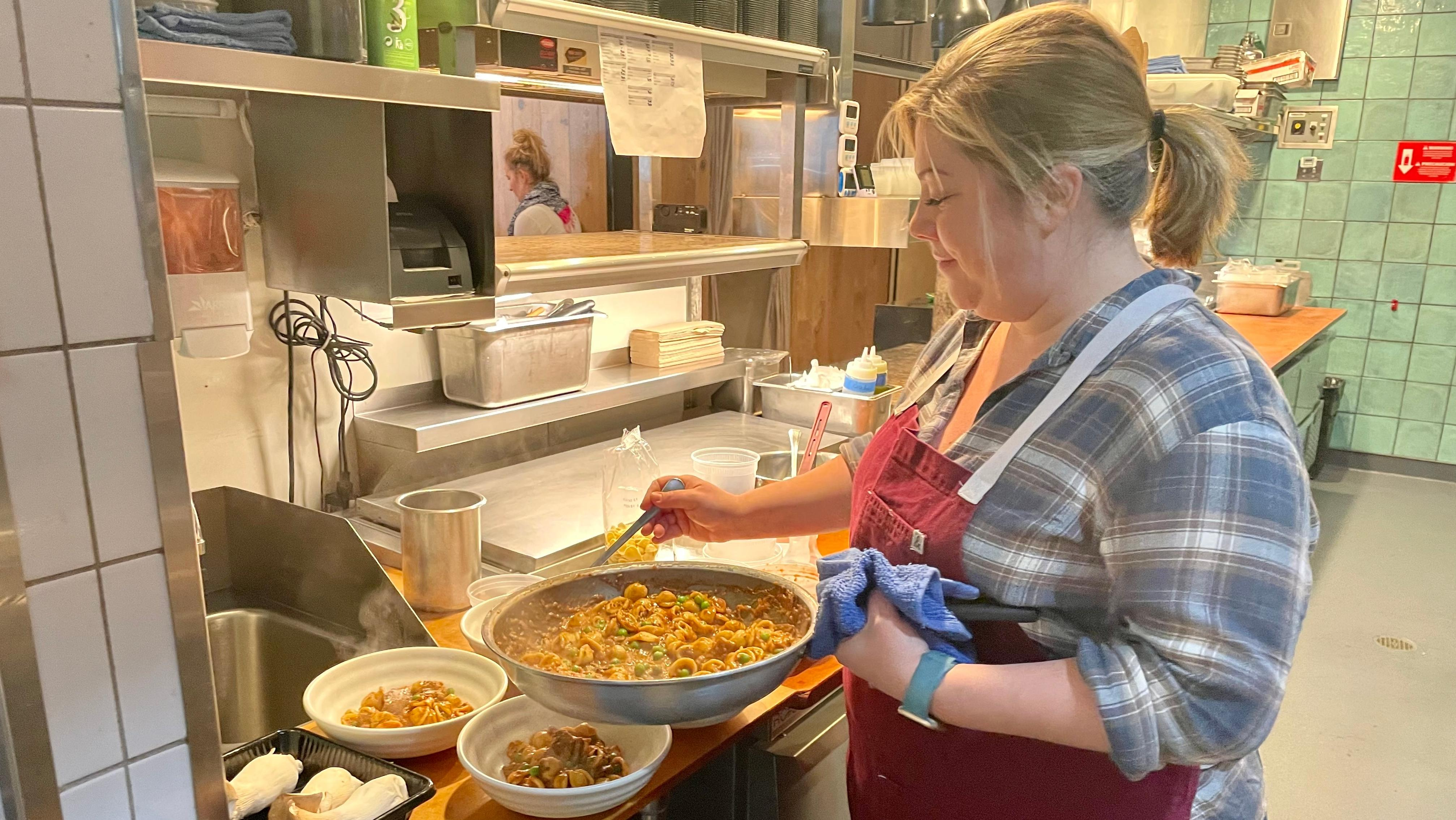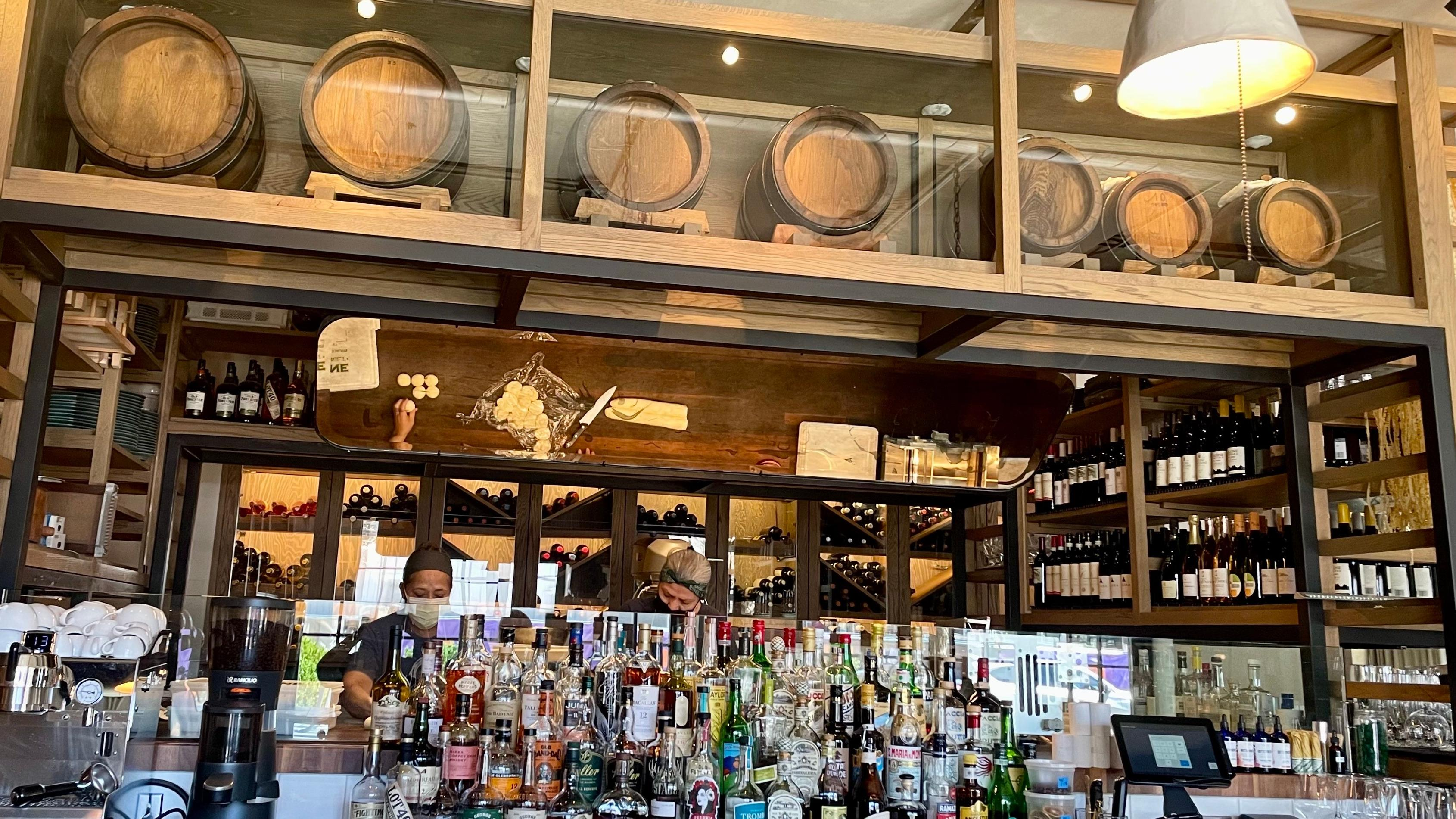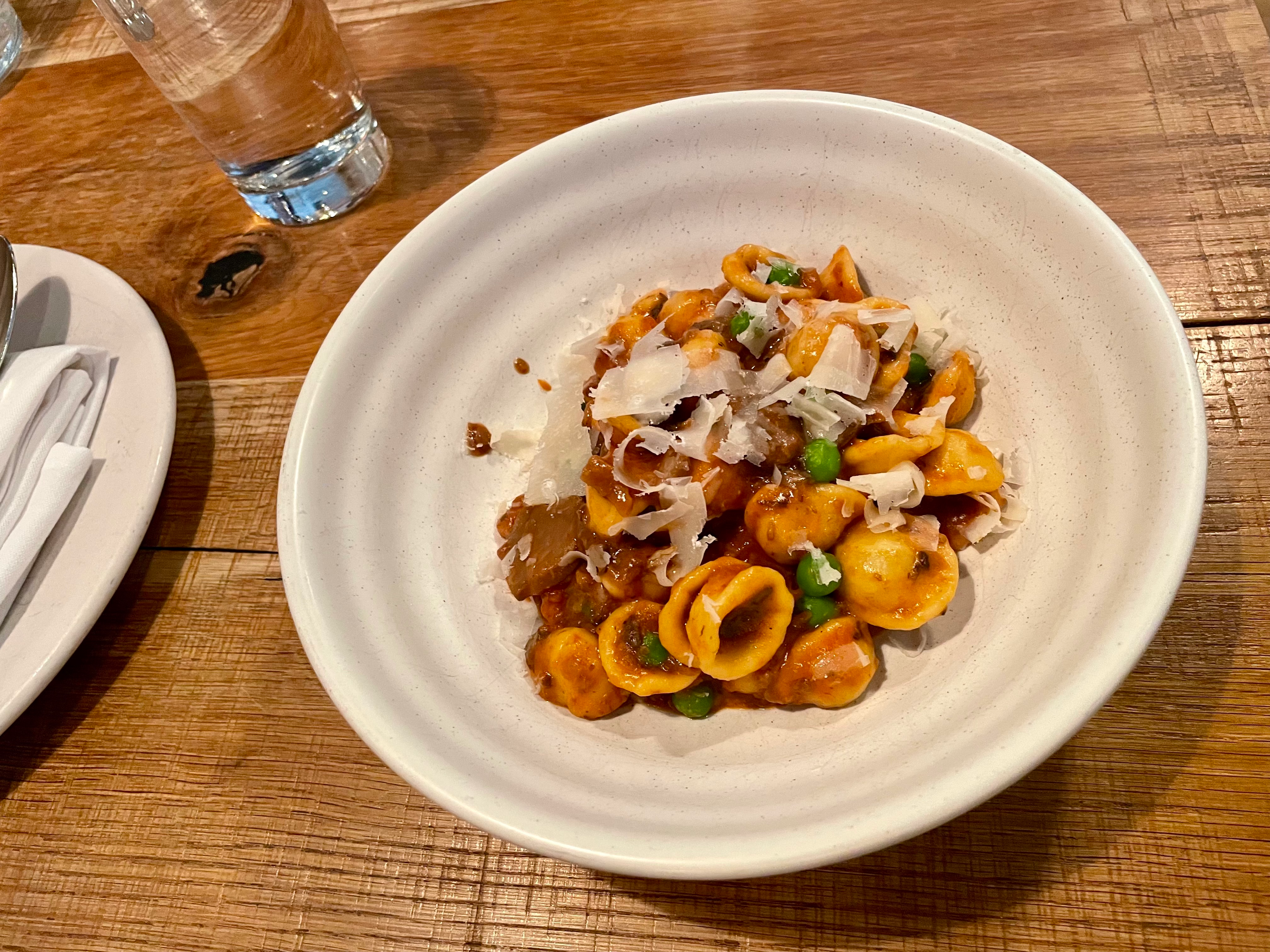The Secret To Perfect Mushroom Bolognese, According To A Pro Chef
A glimpse behind the scenes of a Top Chef's restaurant, and the dish she's most excited about right now.
It's tough to find a good spot to eat in an airport, and most of us end up succumbing to a $30 grab-and-go item that isn't even good. And on board the aircraft itself, well, jokes about airline meals are hack for a reason. That's likely why American Airlines and the James Beard Foundation partnered up back in 2019 to amp up those in-flight offerings. While the pandemic derailed plans to introduce chef-created meals in American Airlines lounges across the country as well as on board certain flights, those plans were finally able to come to fruition this year, with Chicago's Flagship Lounge opening this week at O'Hare International Airport.
Part of the initiative was to tap acclaimed chefs local to each airport to create a signature dish to be served in the lounge. It sounds a bit like a Top Chef challenge, which is maybe why the James Beard Foundation thought to tap Chef Sarah Grueneberg, a finalist on the show's ninth season, as the first chef to be involved.
In her years as a chef Grueneberg has appeared on several other cooking shows, been awarded Michelin stars, won a James Beard Award, and has received rave reviews for her Chicago Italian restaurant, Monteverde Restaurant and Pastificio. I was invited to join her in the Monteverde kitchen to see firsthand what goes into the creation of airline food you can actually get excited about: a mushroom bolognese.
While in the Monteverde kitchen, I was able to not only get a rare glimpse behind the scenes of a highly acclaimed Chicago restaurant, but learn a little bit more about Grueneberg and pick up a few invaluable tips for creating a memorable mushroom bolognese along the way.
The most important part of any Italian recipe: Eatability
Chef Sarah Gruenbreg opened Monteverde Restaurant & Pastificio in November 2015 with a focus on bringing what she learned about Italian cuisine and cooking to Chicago. There are several things to marvel at in the space: the pasta-making station sits elevated behind the bar where all diners can see the masters at work thanks in part to a mirror positioned to show the pasta makers' hands folding and cutting intricately shaped noodles and dough for items like tigelle, an Italian bread paired with burrata and prosciutto on the Monteverde menu.
Above that station are seven barrels, each made from a different type of wood, being used to age and blend balsamic vinegar. And back in the kitchen is a staff that's majority female, something that's always a welcome sight (and still all too rare; according to Zippia, only about 25% of chefs are women). In the hours before the restaurant opens the prep kitchen is running like a well-oiled machine, buzzing with energy as cooks each run their own efficient systems. In the dining room, the front of house team is preparing boxed meal kits being sent to folks in the city and surrounding suburbs so they can make Monteverde meals at home—this month it's spaghetti and meatballs.
Grueneberg spends countless hours with her team perfecting any new recipe, she tells me, including the mushroom bolognese I joined her in the kitchen to make. While everything Grueneberg creates is a feast for the eyes on a plate, her focus and what she teaches other young chefs is that in her restaurant, eatability comes first. "A lot of times young cooks and young chefs think more about how it looks. And the next step is we'll sit down and taste it, and like, how hard is it to get a perfect bite?" Grueneberg says. "Italian food isn't meant to be like that, we're talking comfort."
Tips for a perfect mushroom bolognese
That sense of comfort is at the center of the mushroom bolognese, and as Chef Grueneberg walks me through the dish, she offers advice on how to replicate the warm and hearty sauce at home. She chose mushrooms as the base for the recipe being served at O'Hare as opposed to meat, as would be in a traditional bolognese, taking into consideration the ideal ingredients to have in your stomach on a long flight. Not to mention, the more often you can cook with mushrooms, the better.
"Mushrooms are one of those ingredients that have so much flavor and umami that you're really able to play with," Grueneberg says. "That's the secret to cooking mushrooms: you want to start your pan with a thin layer and cook them in batches; you don't want to overcrowd."
In Monteverde's kitchen, all the ingredients are nicely laid out and pre-measured in plastic deli containers. On the day we cook this dish, Chef Grueneberg includes:
- Trumpet Royale mushrooms
- Dried porcini mushrooms
- Porcini mushroom stock
- A mixture of finely chopped and sauteed shallots, carrots, celery, and onions
- Tomato paste
- Parmesan rind
- Red wine
- Cream
- Butter
- Fresh peas
"Think about the things you need to do," Grueneberg says. "A little tip would be to put those veggies right in the food processor and pulse them. Then you can do that while your mushrooms cook, finding time to multitask as you go."
And you should also season as you go, Grueneberg says, sprinkling in a bit of salt as she adds the chopped veggie mixture to the pan, then the dried mushrooms, then the tomato paste.
"I feel like the tomato paste is like the glue. It's like, 'Come together, my children!'" she says, stirring and smiling. Grueneberg glows when she's cooking, proof that her whole heart is in it, even when doing the simplest task. It's a reminder that passion is a secret ingredient to any recipe that can't be taught.
The sauce is finished off by dropping in some Parmesan rinds, red wine, and cream, and that should simmer for at least 45 minutes but can cook for hours if you want. That extra time will only meld together all the flavors more (right before you serve is when it's time to stir in that butter). While that's finishing up, put on your pasta. In this instance, Gruenburg boiled up some orecchiette, which is Italian for "little ears."
"The Italians name all of their pastas after body parts," Grueneberg says. "Tortellini are belly buttons."
Once everything is properly cooked, it's time for what Grueneberg calls the "marriage ceremony," the cooking of the pasta in the sauce itself. She uses whimsical language in the kitchen that makes creating the dish feel fun and more accessible no matter your skill level. And it's all in the name of introducing people to a new way of looking at something as seemingly simple and ubiquitous as a pasta dish.

"I grew up eating spaghetti and we would ladle the sauce on top, and I feel like that's how everyone did it, unless you're, like, super Italian," Grueneberg says. "But when I started training in Italy and eating Italian food, I realized that they finish their pasta in the sauce. So what's going to happen here is, truly, these are going to marry into one."
The finishing touch is stirring in those fresh peas, and after plating she grates on some fresh Parmesan. It's bright yet meaty (despite having no meat), warm and comforting while still feeling like an elevated dish—I can say with confidence that it's one of the best pasta dishes I've enjoyed in recent memory. Definitely better than anything I've ever eaten in an airport before.


